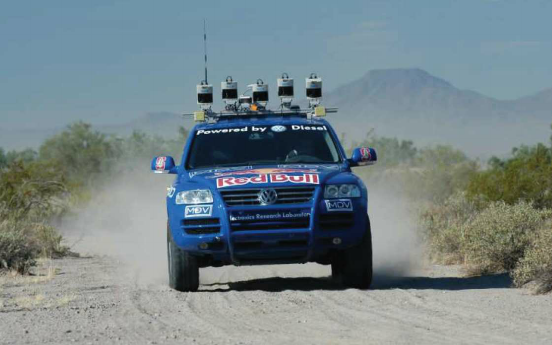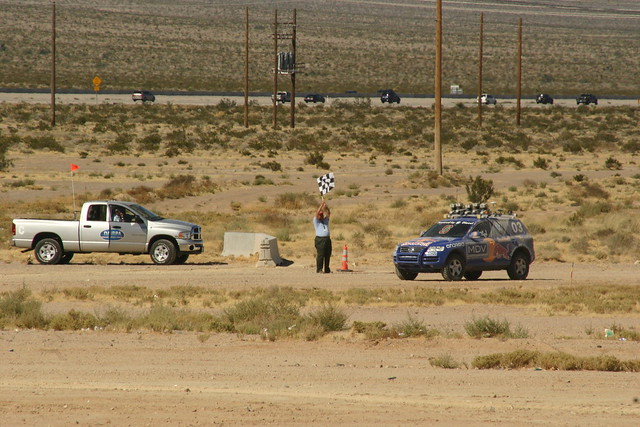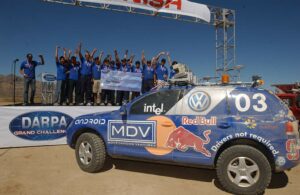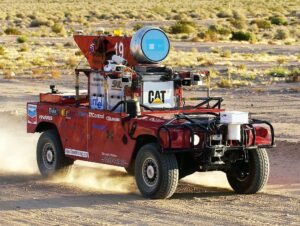
The advent of self-driving cars has revolutionized the automotive industry, promising increased safety, efficiency, and convenience. Among the pioneers in this domain, CyberRider has emerged as a leading innovator with its groundbreaking approach to autonomous vehicle technology. Through a unique combination of cutting-edge hardware, advanced software algorithms, and extensive data analysis, CyberRider has set itself apart in the pursuit of safe and reliable autonomous transportation solutions. This article explores CyberRider’s approach to self-driving cars and highlights the key innovations that have propelled them to the forefront of the industry.
Sensor Fusion: A Multifaceted Perspective

At the heart of CyberRider’s self-driving technology lies an intricate sensor fusion system. By combining data from a diverse array of sensors, including LiDAR, radar, cameras, and ultrasonic sensors, the company achieves a comprehensive and robust perception of the vehicle’s surroundings. This multidimensional perspective enables the vehicle to accurately perceive objects, pedestrians, and complex road scenarios in real-time, significantly enhancing its decision-making capabilities.
Machine Learning and Artificial Intelligence
CyberRider harnesses the power of machine learning and artificial intelligence (AI) to continually improve the performance of its self-driving system. By leveraging vast amounts of data collected from real-world driving scenarios, their algorithms can learn and adapt to a wide range of driving conditions. Through a process known as deep reinforcement learning, the system can make intelligent decisions based on the analysis of past experiences, thus optimizing its driving behavior and response to various situations.
Safety First: Redundancy and Fail-Safe Mechanisms
Ensuring passenger safety is a paramount concern in the development of self-driving cars, and CyberRider prioritizes this aspect through the integration of redundancy and fail-safe mechanisms. The vehicle’s critical systems, such as braking, steering, and perception, are redundantly designed to minimize the risk of failure. Additionally, the AI algorithms are continuously monitored and subjected to rigorous testing to identify and rectify any potential issues. In the event of a system failure or anomaly, the vehicle has the capability to safely transition to a minimal-risk state or alert the human operator for intervention.
Real-Time Mapping and Localization
Accurate mapping and localization are crucial for the successful operation of self-driving cars, and CyberRider has developed innovative approaches to address these challenges. Through the use of high-definition mapping technology, the vehicle can precisely locate itself within its environment, enabling it to navigate complex road networks with confidence. Real-time updates and corrections to the map are constantly fed into the system, ensuring that the vehicle has the most up-to-date information at all times.-Machine Collaboration
CyberRider recognizes the importance of human-machine collaboration in the transition to fully autonomous driving. Their approach involves a gradual progression from driver-assist systems to higher levels of automation, allowing drivers to gradually relinquish control while maintaining the option for manual intervention. This approach not only ensures a smooth transition but also promotes user acceptance and trust in the technology.
Regulatory Compliance and Industry Collaboration
Innovation in the field of self-driving cars is not solely a technological challenge; it also requires close collaboration with regulatory bodies and industry stakeholders. CyberRider actively engages with policymakers and regulatory agencies to contribute to the development of safety standards and regulations for autonomous vehicles. By actively participating in industry collaborations, they aim to foster a cooperative environment that accelerates the widespread adoption of self-driving technology.
Conclusion
CyberRider’s approach to self-driving cars combines state-of-the-art hardware, advanced software algorithms, and a commitment to safety to create a compelling vision for the future of transportation. Through their groundbreaking innovations in sensor fusion, machine learning, safety systems, mapping, and collaboration, they have established themselves as a frontrunner in the autonomous vehicle industry. As technology continues to evolve, CyberRider remains dedicated to pushing the boundaries of innovation in motion, revolutionizing transportation as we know it.


